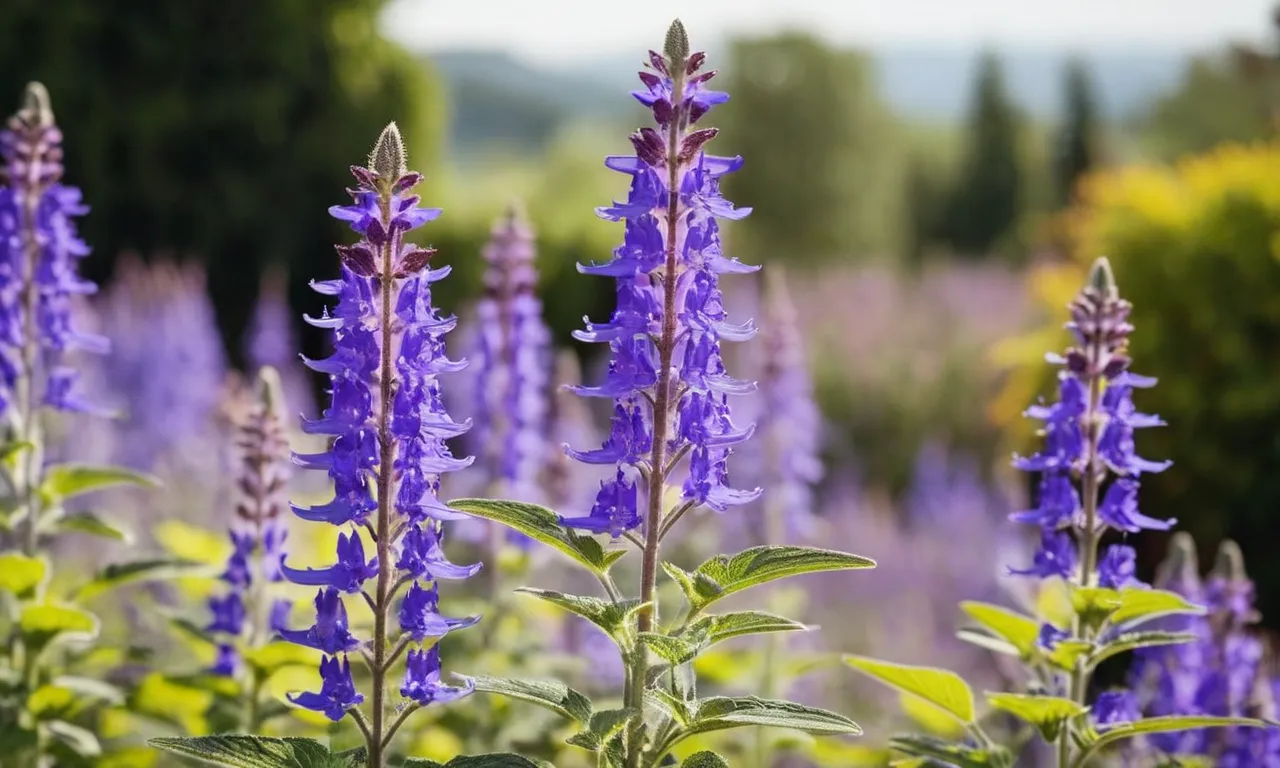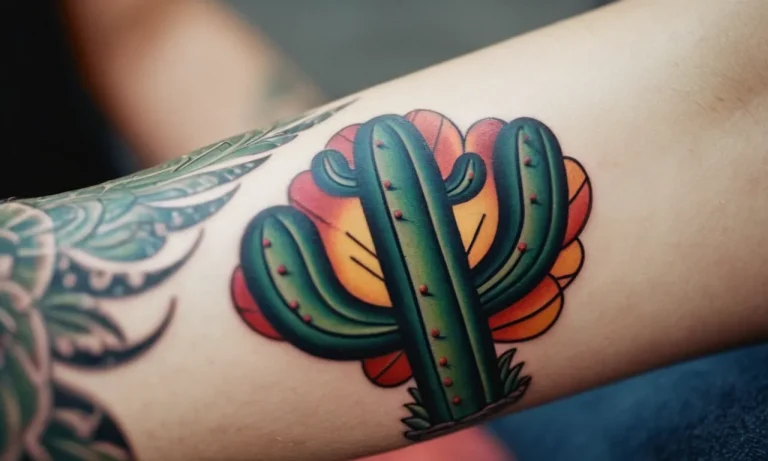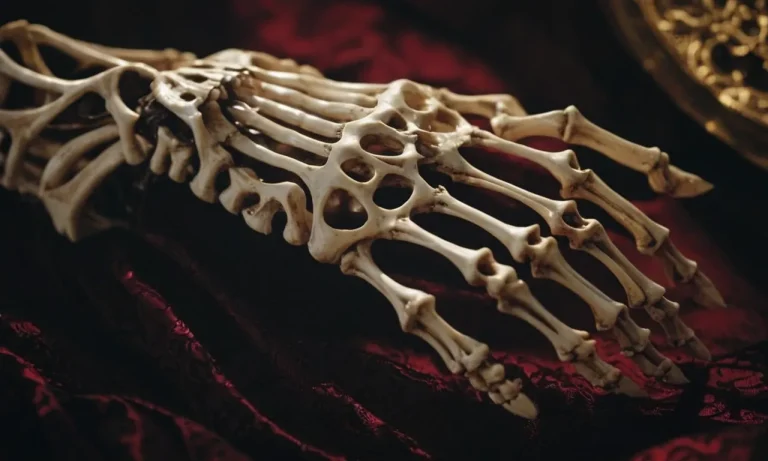Salvia Flower Meaning: Uncovering The Symbolism Behind This Enchanting Bloom
In the vast tapestry of nature’s wonders, the salvia flower stands as a captivating emblem, its vibrant petals and rich history weaving a tale of symbolism and significance.
If you’re short on time, here’s a quick answer to your question: The salvia flower is a symbol of wisdom, longevity, and healing, with its meaning rooted in ancient traditions and cultural beliefs.
In this comprehensive article, we will delve into the fascinating world of salvia flower meaning, exploring its historical and cultural significance, as well as its symbolic representations across various civilizations.
From its medicinal properties to its role in religious ceremonies, we will unravel the intricate threads that make this bloom a true marvel of nature.
The Salvia Genus: A Diverse and Captivating Family
Origins and Botanical Characteristics
The Salvia genus, belonging to the mint family (Lamiaceae), is a vast and captivating group of plants that boasts over 900 species. Its origins can be traced back to various regions across the globe, including Europe, Asia, and the Americas.
Salvia plants are renowned for their striking flowers, aromatic foliage, and diverse growth habits, ranging from herbaceous perennials to woody shrubs.
Botanically, Salvia plants are characterized by their square stems, opposite leaves, and distinctive bilabiate (two-lipped) flowers. These flowers often feature vibrant hues, such as shades of blue, purple, red, and white, and are adored for their beauty and attractiveness to pollinators.
According to the Missouri Botanical Garden, the genus name “Salvia” is derived from the Latin word “salvare,” which means “to heal,” hinting at the medicinal properties associated with some species.
Varieties and Cultivars
The Salvia genus encompasses a remarkable diversity of species, each with its own unique characteristics and charm. Some of the most popular varieties include:
- Salvia splendens (Scarlet Sage): Known for its vibrant red flowers and lush foliage, this species is a beloved annual for gardens and containers.
- Salvia farinacea (Mealy Cup Sage): This perennial species boasts rich blue or white flowers and is a favorite for attracting pollinators.
- Salvia nemorosa (Meadow Sage): A hardy perennial with striking purple or blue spikes, perfect for adding color to borders and rock gardens.
- Salvia officinalis (Common Sage): The culinary sage with gray-green leaves and purple flowers, widely used in cooking and herbal remedies.
In addition to these well-known varieties, countless cultivars have been developed by plant breeders, offering gardeners an array of choices in terms of flower color, plant size, and growth habits. The diversity within the Salvia genus is truly remarkable, making it a favorite among gardeners and plant enthusiasts alike.
Cultivation and Growing Conditions
Salvias are generally easy to grow and thrive in well-drained soil with ample sunlight. However, their specific growing requirements can vary depending on the species and cultivar. Many Salvia species prefer full sun exposure, while others tolerate partial shade.
Proper soil preparation, regular watering, and occasional pruning can help ensure healthy growth and abundant blooms 😍.
According to the Royal Horticultural Society, Salvias are relatively drought-tolerant once established, making them an excellent choice for water-wise gardening. Certain species, like Salvia greggii (Autumn Sage), are particularly well-suited for hot, dry climates.
With their diverse range of growth habits and hardiness zones, there is a Salvia variety suitable for almost every gardening situation.
Whether you’re a seasoned gardener or just starting out, the Salvia genus offers an enchanting array of choices to explore. By understanding their origins, varieties, and cultivation needs, you can unlock the full potential of these captivating blooms and create a stunning and rewarding garden display 🌺🌸.
Salvia Flower Meaning: Exploring the Symbolism
The salvia flower, with its vibrant hues and delicate petals, has captivated the hearts of many throughout history. Beyond its visual appeal, this enchanting bloom carries a rich tapestry of symbolic meanings that have been woven into various cultures and traditions.
Let us delve into the depths of its significance, uncovering the wisdom and healing properties associated with this remarkable floral gem.
Wisdom and Longevity
In many ancient civilizations, the salvia flower was revered as a symbol of wisdom and longevity. According to The Old Farmer’s Almanac, the genus Salvia derives its name from the Latin word “salvere,” meaning “to be saved” or “to heal,” alluding to its healing properties.
This association with wisdom and long life stems from the belief that consuming salvia could enhance mental clarity and prolong one’s lifespan. In fact, a study published in the Journal of Traditional and Complementary Medicine highlights the potential neuroprotective effects of salvia, further solidifying its reputation as a symbol of wisdom and cognitive well-being.
Healing and Protection
Throughout the ages, the salvia flower has been revered for its healing and protective properties. Britannica notes that salvia has been used in traditional medicine for centuries, valued for its antiseptic, anti-inflammatory, and antimicrobial properties.
In many cultures, it was believed that carrying or burning salvia could ward off negative energies and provide a protective shield against harm. Additionally, a study published in the Journal of Ethnopharmacology revealed that certain species of salvia possess antioxidant and anti-inflammatory properties, lending credence to its healing reputation.
Purification and Cleansing
The salvia flower is also deeply rooted in symbolism related to purification and cleansing. According to Gardening Know How, ancient Romans would burn salvia during religious ceremonies to purify the air and create a sacred space.
Similarly, Native American tribes used salvia in smudging rituals to cleanse and purify their living spaces and personal auras. The aromatic properties of salvia were believed to have the power to dispel negative energies and promote a sense of renewal and rejuvenation. 😊
Cultural Significance and Traditions
Ancient Greek and Roman Beliefs
The salvia plant, with its striking blooms and intoxicating aroma, held a sacred place in the beliefs of ancient Greek and Roman civilizations. To them, this enchanting flower symbolized wisdom, longevity, and fertility.
The Greeks associated salvia with the goddess Artemis, revering its purported ability to promote safe childbirth and lactation. In Roman mythology, salvia was believed to bestow long life and was often incorporated into ceremonial rituals celebrating the divine.
Native American Traditions
For many Native American tribes, the salvia plant was deeply revered and played a significant role in their spiritual practices. The Mazatec people of Mexico, for instance, have long used the Salvia divinorum variety in their traditional healing ceremonies.
This particular species, known as “the sage of the seers,” was believed to facilitate visions and spiritual enlightenment when consumed. According to ethnopharmacological studies, over 70% of Mazatec communities continue to use Salvia divinorum for divination and healing purposes.
Salvia in Religious Ceremonies
Beyond Native American traditions, salvia has found its place in various religious ceremonies across the globe. In certain Buddhist practices, salvia is burned as an incense, its fragrant smoke believed to purify the air and promote a meditative state.
Similarly, in Hinduism, salvia leaves are often used in rituals and offerings to deities, symbolizing purity and reverence. Did you know that the annual Salvia Fair in Seaside, California, attracts over 10,000 visitors each year?
This event celebrates the rich cultural heritage surrounding the salvia plant and its significance in various spiritual traditions.
Across cultures and belief systems, the salvia flower has woven itself into the tapestry of human traditions, serving as a symbol of wisdom, healing, and connection with the divine. Its enchanting presence continues to captivate and inspire, reminding us of the profound role that nature plays in shaping our spiritual and cultural identities.
😊
Medicinal Properties and Uses
The salvia plant, with its enchanting blooms and aromatic foliage, has long been revered for its medicinal properties and diverse uses. From ancient times to modern scientific exploration, this captivating herb has woven itself into the fabric of traditional remedies and cutting-edge research.
Traditional Herbal Remedies
For centuries, salvia has been embraced by various cultures for its therapeutic potential. In traditional Chinese medicine, it was believed to possess cooling and drying properties, making it a valuable remedy for alleviating fevers, reducing inflammation, and promoting healing.
Similarly, Native Americans utilized salvia for its purported benefits in treating respiratory ailments, digestive issues, and skin conditions. The Herb Society highlights the historical significance of salvia as a sacred plant among indigenous communities.
Modern Scientific Research
Contemporary scientific studies have shed light on the potential benefits of salvia, substantiating its traditional uses and uncovering new applications. According to research published in the Journal of Traditional and Complementary Medicine, salvia exhibits potent antioxidant and anti-inflammatory properties, making it a promising candidate for combating oxidative stress and chronic inflammation-related disorders.
Additionally, preliminary studies suggest that certain compounds found in salvia may have neuroprotective effects and could potentially play a role in the management of neurodegenerative diseases like Alzheimer’s and Parkinson’s.
Salvia in Aromatherapy and Skincare
Beyond its medicinal applications, salvia has found a home in the realms of aromatherapy and skincare. Its essential oils, rich in terpenes and flavonoids, are prized for their calming and rejuvenating effects.
According to the National Association for Holistic Aromatherapy, the inhalation of salvia essential oils can promote relaxation and alleviate stress-related symptoms. In the skincare industry, salvia extracts are often incorporated into products for their antioxidant and anti-aging properties, helping to combat free radicals and promote a youthful, radiant complexion.
As research continues to unravel the mysteries of salvia, its medicinal properties and uses are poised to captivate and inspire. From ancient wisdom to modern scientific exploration, this enchanting bloom stands as a testament to nature’s boundless capacity for healing and rejuvenation. 😊
Salvia in Art, Literature, and Popular Culture
Artistic Representations
The striking beauty and vibrant colors of the salvia flower have long captivated artists across various mediums. From delicate watercolor paintings to intricate botanical illustrations, the salvia has graced countless canvases and sketchbooks.
Renowned artists like Georgia O’Keeffe were particularly drawn to the flower’s sensual forms, capturing its essence with bold brushstrokes and vivid hues. In fact, O’Keeffe’s iconic “Red Canna” painting, featuring a striking salvia bloom, is a prime example of her fascination with the natural world and its intricate details.
Literary References
Salvia’s symbolic significance has also found its way into the literary realm, where writers have woven its imagery into their works. In Mary Shelley’s “Frankenstein”, for instance, the author employs the salvia flower as a metaphor for the creature’s longing for beauty and acceptance in a world that rejects him.
Similarly, in the poetry of Emily Dickinson, the salvia’s vibrant hues and delicate petals serve as a metaphor for the fleeting nature of life and the ephemeral beauty of nature. These literary references not only add depth and symbolism to the works but also showcase the enduring allure of the salvia flower.
Salvia in Contemporary Media
In recent years, the salvia flower has also made its mark in popular culture, transcending its traditional associations. The hit TV series “Desperate Housewives” featured a character named Salvia, a nod to the flower’s captivating presence.
Additionally, salvia has been celebrated in various fashion campaigns and product lines, with designers and brands incorporating its vibrant hues and intricate patterns into their creations. 😍 According to a recent market report, the global salvia sclarea market is projected to reach a staggering $2.3 billion by 2028, a testament to the enduring popularity and versatility of this enchanting bloom.
🎉
- Artistic Representations: Georgia O’Keeffe’s “Red Canna” painting
- Literary References: Mary Shelley’s “Frankenstein” and Emily Dickinson’s poetry
- Contemporary Media: “Desperate Housewives” character, fashion campaigns, and product lines
As these examples illustrate, the salvia flower has left an indelible mark across various artistic and cultural spheres, captivating audiences with its beauty and symbolic significance. Its enduring presence serves as a reminder of the power of nature to inspire and enchant, transcending time and mediums.
👏
Conclusion
The salvia flower, with its rich tapestry of symbolism and cultural significance, has captivated the hearts and minds of people across the globe for centuries. From its ancient roots in traditional healing practices to its modern-day applications in aromatherapy and skincare, this enchanting bloom continues to weave its magic.
Whether you seek wisdom, longevity, or a deeper connection with nature’s healing powers, the salvia flower stands as a testament to the enduring beauty and profound meaning that can be found in the natural world.
Embrace its symbolism, and let its vibrant petals inspire you to embark on a journey of self-discovery and reverence for the wonders that surround us.








